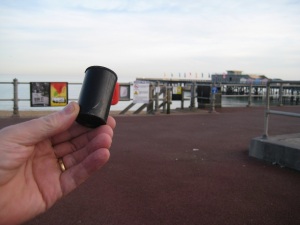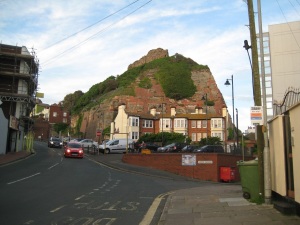Hello, Mrs Hg137 here.
After a few days on the lovely Isle of Wight, Monday morning was free for a little geocaching before taking an early afternoon ferry northwards and homewards. We went to Bembridge, on the eastern tip of the island, an area we’d seldom visited. Here’s a description:
“Bembridge Village won ‘Village of the Year’ in the BBC Countryfile Magazine Awards 2019. It was described as having a “wonderful coastal setting with a pier and lifeboat station, plus a busy village community with independent shops, cafés and restaurants. With three great beaches and the white cliffs of Culver Down on the doorstep, the village is a perfect base for exploring.”. About one mile south is Bembridge Airport. It stretches around most of the Eastern tip of the Isle of Wight and is claimed to be the largest village in England, with a population of approximately 4,000 residents.”
To get a jolly good look around the village, we’d picked four ‘traditional’ geocaches to find, plus one Adventure Lab (AdLab) cache, which would take us on a village tour, visiting the harbour, the church, the only windmill on the island, a telephone box (but a very, very special one!), and Bembridge Ledge, great for rockpooling.
Our first stop was the windmill, at the top of a hill at the edge of the village. It’s a fine building, with commanding views and plenty of access to … wind … you can see why it was built there. As it was late January, it wasn’t open, but we admired it from various angles, admired the black sheep doing some conservation grazing, and found our first cache of the day.


Back in the centre of the village, we spotted the village telephone box. So what is special about this telephone box? It’s said to be the oldest working phone box in the country, dating from 1921, and is Grade II listed. (FYI This box is the K1 design, the first. The “classic” red telephone box is the K6 design of 1936.) And, for geocachers (both those doing AdLab caches and those searching for ‘traditional’ caches), there’s a cache starting at this point, from the Fine Pair series (where a phone box and post box are in close proximity); we worked out the coordinates and found an appropriately telephone-themed cache container a little way away down a quiet street.
We reached the seashore, a stony, sandy beach, via a ‘secret’ path that dives between houses, then worked our way round to the harbour. Close by is a large, ornate, and rather incongruous drinking fountain, the Palmer Memorial. It stood outside the Spithead Hotel, now demolished and replaced by flats. The granite object also made a fine subject for an earthcache (they tend to be about geology) so we spent a few minutes examining various bits of rock on the fountain and learning about the properties of granite as we did so.
The final part of our tour took us along the road which hugs the edge of the shoreline, leading west towards St Helens. The edge of the village is marked by the village sign (which, of course has an associated geocache). It was a great spot to end our tour of Bembridge, finishing with a slightly chilly, breezy picnic on a seat overlooking the harbour.














































































































